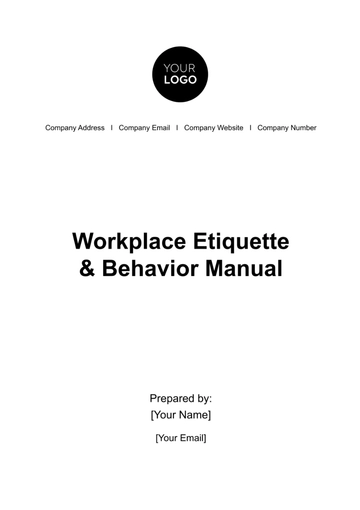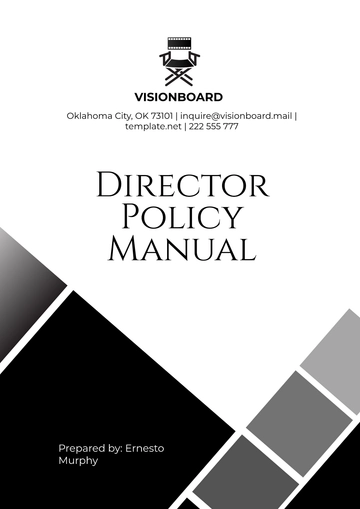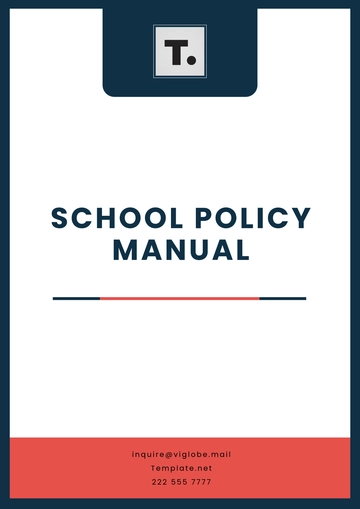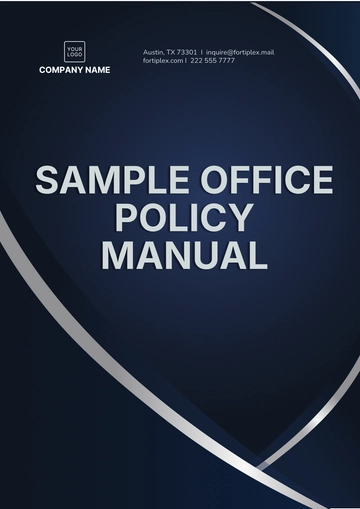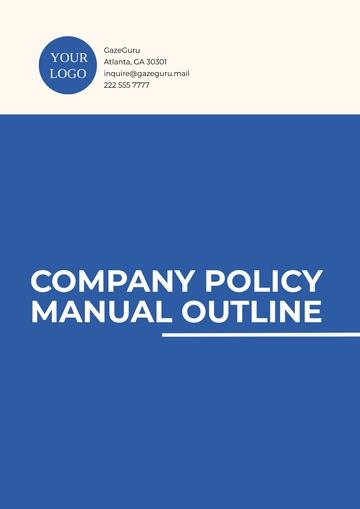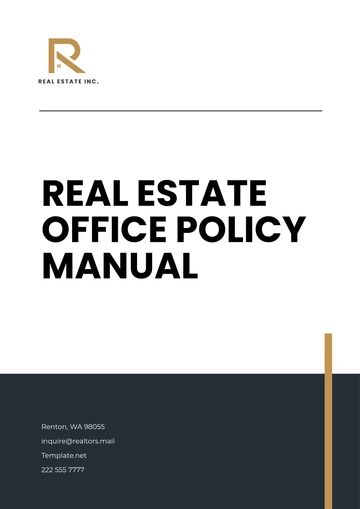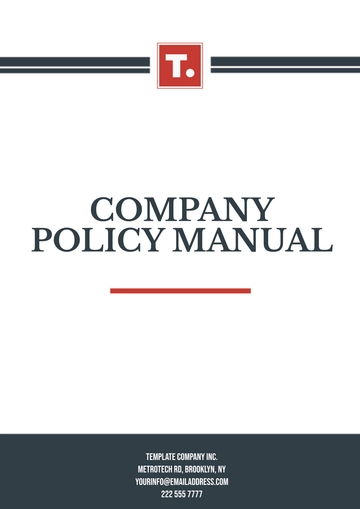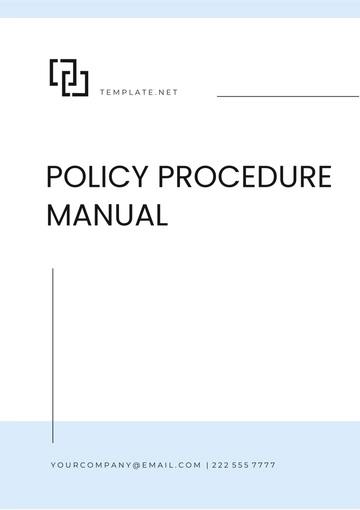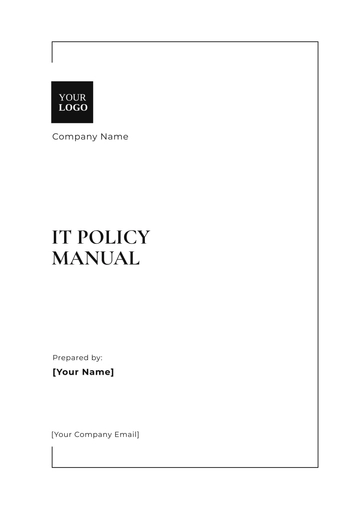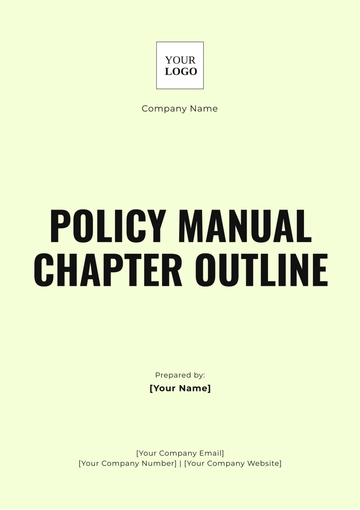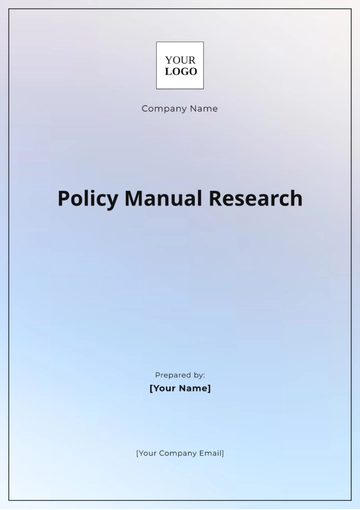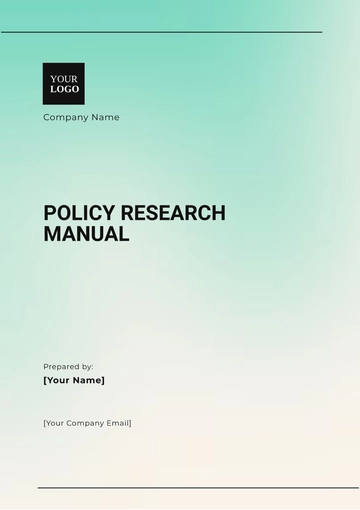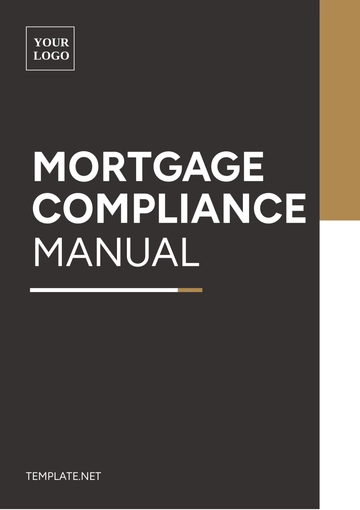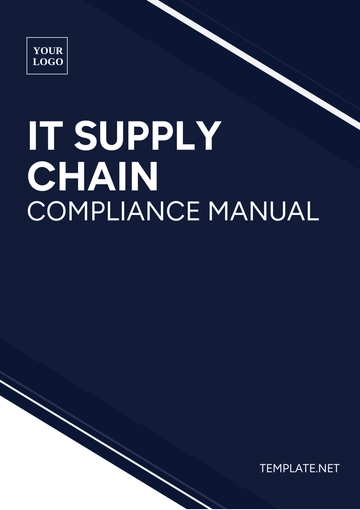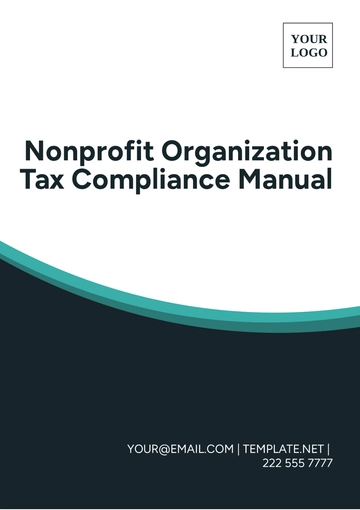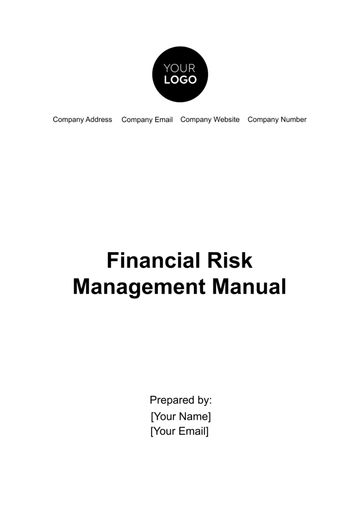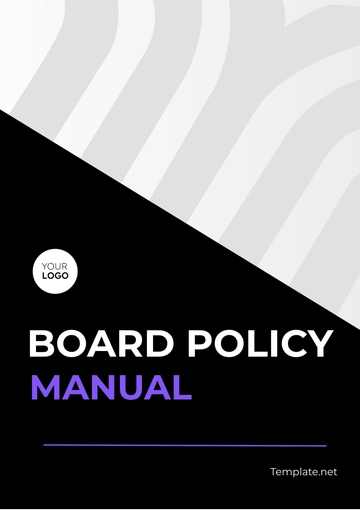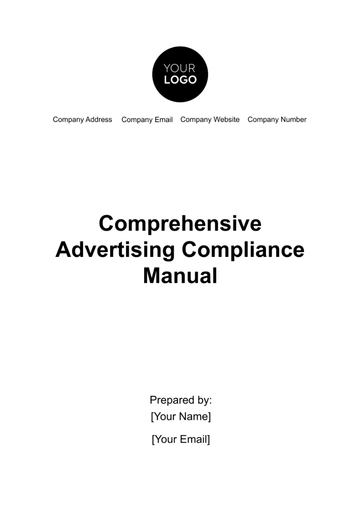Free Account Budget Policy & Procedure Manual
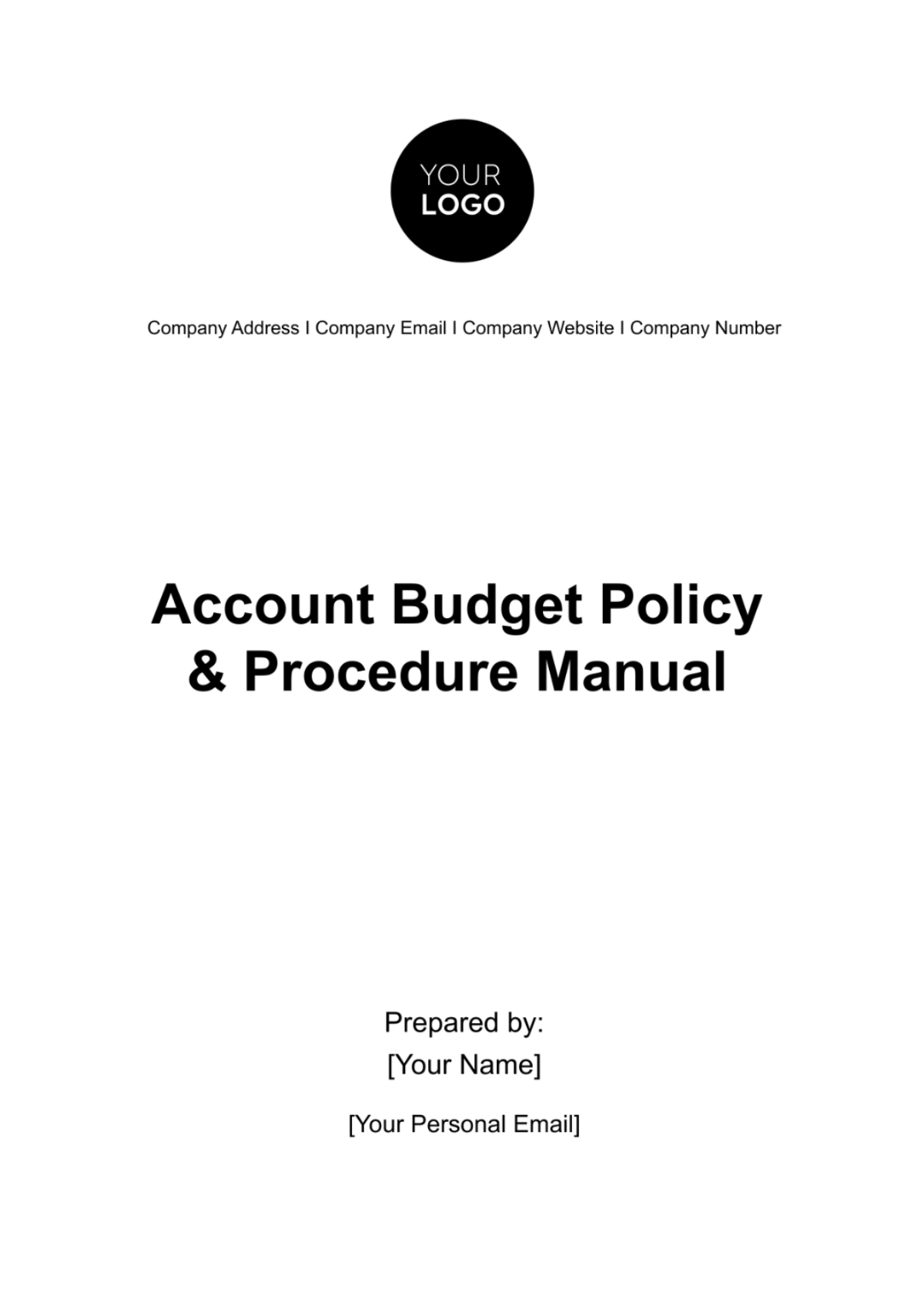
Introduction
A. Purpose
The purpose of this Account Budget Policy & Procedure Manual is to establish a comprehensive framework for budgeting within [Your Company Name]. It aims to ensure fiscal responsibility, transparency, and effective financial management across all departments. The primary objectives include:
Financial Stability: To maintain and enhance the financial stability of [Your Company Name] through sound budgeting practices.
Strategic Alignment: To align budgetary goals with the strategic objectives of the organization, ensuring that financial resources are directed towards key priorities.
Stakeholder Confidence: To instill confidence in stakeholders, including investors, employees, and clients, by demonstrating a commitment to responsible financial management.
B. Scope
This manual applies to all departments within [Your Company Name], including but not limited to Finance, Marketing, Operations, and Human Resources. It is designed to guide budget development, approval, monitoring, and adjustments throughout the annual budget cycle. The scope encompasses:
Cross-Departmental Collaboration: Encouraging collaboration among different departments to create holistic and realistic budgets that reflect the entire organization's needs.
Inclusive Decision-Making: Involving key stakeholders in the budgeting process to ensure that diverse perspectives are considered, enhancing the accuracy and relevance of budgets.
Continuous Improvement: Providing a framework for ongoing improvement, allowing the organization to adapt to changing market conditions and business requirements.
C. Objectives
The key objectives of this manual are:
Transparency and Accountability: To establish transparent processes and accountability mechanisms throughout the budgeting lifecycle.
Compliance: To ensure compliance with relevant regulatory requirements and legal standards, fostering ethical financial practices.
Resource Optimization: To optimize the allocation and utilization of resources, aligning budgets with organizational priorities.
Budgeting Principles
A. Overview
Budgeting at [Your Company Name] is based on several fundamental principles:
Alignment with Strategic Goals: Budgets must align with the strategic goals and objectives of the organization.
Accuracy and Precision: Budgets should be prepared with accuracy, utilizing historical data and forecasting techniques.
Inclusivity: Involvement of department heads and key stakeholders ensures comprehensive budgeting that reflects operational needs.
B. Fiscal Responsibility
At the core of our budgeting principles is fiscal responsibility. This involves:
Resource Optimization: Maximizing the use of available resources to achieve organizational objectives.
Cost Efficiency: Identifying cost-saving opportunities without compromising quality.
Risk Management: Anticipating and mitigating financial risks through prudent budgeting practices.
C. Transparency
Transparency in the budgeting process is essential for accountability and trust. Key transparency measures include:
Open Communication: Ensuring open lines of communication between departments, stakeholders, and the Finance team.
Documentation: Thorough documentation of budget development, approvals, and adjustments.
Accessible Reporting: Providing accessible reports to all stakeholders, allowing them to understand and scrutinize the budgetary details.
D. Accountability
To uphold accountability in budgeting, [Your Company Name] adheres to the following principles:
Clear Roles and Responsibilities: Clearly defining the roles and responsibilities of each stakeholder in the budgeting process.
Performance Metrics: Establishing performance metrics to evaluate the success of budgetary goals.
Continuous Improvement: Encouraging continuous improvement through feedback and lessons learned from past budget cycles.
Budget Development
A. Annual Budget Cycle
The annual budget cycle at [Your Company Name] follows a structured timeline:
Phase | Timeline |
|---|---|
Preliminary Budget | [January - March] |
Department Reviews | [April - May] |
Budget Committee Review | [June] |
Executive Approval | [July] |
Implementation | [August - December] |
Monitoring and Adjustments | [Throughout the Year] |
Preliminary Budget [January - March]:
During this phase, departments submit their preliminary budget proposals based on the strategic goals and expected operational requirements. The Finance team reviews historical data, market trends, and departmental submissions to create an initial budget draft.
Department Reviews [April - May]:
Each department conducts a detailed review of its budget proposal, ensuring alignment with strategic goals and addressing any feedback from the Finance team. Budget managers collaborate with department heads to refine their budget submissions.
Budget Committee Review [June]:
The Budget Committee, comprising representatives from various departments, convenes to review and consolidate departmental budgets. Discussions focus on resource allocation, risk assessment, and overall alignment with the organization's objectives.
Executive Approval [July]:
The finalized budget is presented to the executive team for approval. The executive team evaluates the budget's strategic alignment, financial feasibility, and overall impact on the company's objectives. Once approved, the budget moves to the implementation phase.
Implementation [August - December]:
Departments execute their budgets, and financial transactions are recorded in accordance with the approved budget. Any deviations from the budget are closely monitored, and corrective actions are taken promptly.
Monitoring and Adjustments [Throughout the Year]:
Continuous monitoring of budget performance occurs throughout the year. Regular reports are generated to compare actual expenditures against the budget. If significant variances occur, departments can submit change requests for budget adjustments.
B. Budget Committees
Budget committees play a crucial role in the budget development process. The composition includes representatives from various departments, ensuring diverse perspectives and comprehensive decision-making. The committees are responsible for reviewing departmental budgets, addressing discrepancies, and presenting the consolidated budget for executive approval.
Committee Member | Department/Role |
|---|---|
Finance Manager | Finance Department |
The Budget Committee is chaired by the Chief Financial Officer.
Budget Approval Process
A. Authorization Levels
Defining authorization levels is crucial for a transparent and efficient budget approval process. The following authorization levels are established:
Authorization Level | Approving Authority |
|---|---|
Level 1 | Department Heads |
Level 2 | Budget Committee |
Level 3 | Executive Team |
B. Approval Workflow
The budget approval workflow ensures that budgets undergo a thorough review before final approval. The workflow involves:
Department Heads Submission:
Department heads submit their budget proposals to the Finance Department.
Finance Review:
The Finance Department reviews departmental budgets, providing feedback and seeking clarification if necessary.
Budget Committee Review:
The Budget Committee assesses the consolidated budget, addresses discrepancies, and recommends adjustments.
Executive Approval:
The executive team reviews the final budget and approves it based on its alignment with strategic objectives and financial feasibility.
Communication of Approved Budget:
The Finance Department communicates the approved budget to all relevant departments, initiating the implementation phase.
Budget Monitoring and Control
A. Performance Metrics
Key performance metrics are used to monitor budgetary performance. Examples include:
Metric | Measurement Criteria |
|---|---|
Revenue Growth | Target: [$20 million] annual increase |
B. Variance Analysis
Variance analysis is conducted regularly to compare actual financial performance against the budget. A threshold of [+/- 5%] is set for acceptable variances. If significant discrepancies are identified, corrective actions are taken promptly to realign expenditures with the budget.
Budget Category | Actual vs. Budget Variance |
|---|---|
Revenue | [-2%] |
The variance analysis provides insights into areas where adjustments may be needed, enabling proactive management of financial resources.
C. Reporting
Regular reporting mechanisms are in place to disseminate budget-related information to stakeholders. Monthly and quarterly reports include:
Budget vs. Actual Reports:
A detailed breakdown of actual expenditures compared to the budget, allowing departments to assess their financial performance.
Variance Analysis Reports:
Analysis of significant variances, providing explanations and proposed corrective actions.
Financial Dashboards:
Visual representations of key financial metrics for quick and accessible insights.
Budget Adjustments
A. Change Requests
The budget adjustment process allows departments to submit change requests when unforeseen circumstances or strategic shifts require modifications to the budget. Change requests must include:
Change Request Details | Required Information |
|---|---|
Justification | Detailed explanation of the need for the adjustment |
B. Approval Criteria
Budget adjustments undergo a rigorous approval process to ensure alignment with organizational goals. The criteria for approval include:
Approval Criteria | Requirements |
|---|---|
Strategic Alignment | The proposed adjustment must align with the organization's strategic goals |
Once a change request meets the approval criteria, adjustments are made to the budget, and relevant stakeholders are informed of the modifications.
C. Documentation
Thorough documentation of budget adjustments is maintained to provide transparency and facilitate future analysis. The documentation includes:
Documentation Details | Information Required |
|---|---|
Change Request Form | Completed form detailing the proposed adjustments |
This documentation ensures a clear audit trail, allowing for accountability and transparency in the budget adjustment process.
Training and Communication
A. Training Programs
[Your Company Name] is committed to building a culture of financial literacy and understanding within the organization. The annual training programs are designed to equip employees with the knowledge and skills necessary for effective budgeting. The training content includes:
Training Module | Key Topics Covered |
|---|---|
Budgeting Basics | Understanding the fundamentals of budgeting, including terminology and key concepts. |
These training modules are conducted by experienced financial professionals and incorporate real-world examples to enhance practical understanding.
B. Communication Strategies
To facilitate effective communication throughout the budgeting process, [Your Company Name] employs a multi-channel approach:
Communication Channel | Purpose |
|---|---|
Company-wide Meetings | Announcing annual budget goals and priorities, fostering a sense of organizational unity. |
Additionally, [Your Company Name] encourages an open-door policy for questions and feedback, promoting a culture of transparency and inclusivity.
Documentation and Record-Keeping
A. Record Retention Policy
To ensure compliance and facilitate historical analysis, [Your Company Name] adheres to a record retention policy for budget-related documents:
Document Type | Retention Period |
|---|---|
Budget Proposals | Retained for [5 years] after the end of the fiscal year for historical reference and audits. |
B. Audit Trail
To uphold transparency and accountability, [Your Company Name] maintains a detailed audit trail of budget-related activities:
Audit Trail Details | Information Captured |
|---|---|
User Access Logs | Recording who accessed budget-related systems and when. |
Roles and Responsibilities
A. Budget Manager
The Budget Manager at [Your Company Name] plays a pivotal role in overseeing the entire budgeting process. Responsibilities include:
Key Responsibilities | Specific Duties |
|---|---|
Develop Budget Policies | Formulate and update budget policies and guidelines to align with organizational objectives. |
B. Department Heads
Department Heads are integral to the budgeting process, contributing department-specific insights and ensuring alignment with organizational goals. Their responsibilities include:
Key Responsibilities | Specific Duties |
|---|---|
Budget Proposal Submission | Prepare and submit comprehensive budget proposals, detailing departmental needs and goals. |
C. Finance Department
The Finance Department is at the core of budget-related activities, providing financial expertise and support. Key responsibilities include:
Key Responsibilities | Specific Duties |
|---|---|
Budget Analysis and Reporting | Conduct thorough analysis of budget proposals, highlighting key insights and presenting reports to decision-makers. |
Compliance and Legal Considerations
A. Regulatory Compliance
Ensuring compliance with relevant regulations and legal requirements is critical for [Your Company Name]. Responsibilities include:
Stay Informed on Regulations
Keep abreast of changes in financial regulations and ensure that budgeting processes align with legal standards.
Compliance Audits
Conduct regular audits to ensure that budgeting practices comply with regulatory requirements.
Update Policies
Update budget policies to reflect changes in regulations and ensure ongoing compliance.
Communication with Regulators
Maintain open communication with regulatory bodies, addressing queries and providing necessary documentation.
B. Legal Considerations
Addressing legal considerations in the budgeting process is essential. Responsibilities include:
Contract Review
Collaborate with legal teams to review contracts and assess their financial implications on the budget.
Risk Mitigation
Identify and mitigate legal and financial risks associated with budgetary decisions.
Compliance Training
Provide training to relevant personnel on legal considerations in budgeting.
Dispute Resolution
Facilitate the resolution of budget-related disputes, ensuring adherence to legal processes.
Conclusion
[Your Company Name] has established a robust Account Budget Policy & Procedure Manual, providing a comprehensive framework for effective budgeting and financial management. The manual encompasses key elements, from budget development and approval processes to monitoring, adjustment procedures, and compliance with legal standards.
Throughout this manual, clear roles and responsibilities have been defined for crucial stakeholders, including the Budget Manager, Department Heads, and the Finance Department. The organization's commitment to financial literacy and transparency is evident in the training programs and communication strategies implemented.
The inclusion of record retention policies, audit trails, and legal considerations underscores [Your Company Name]'s commitment to compliance, accountability, and risk management. The conclusion of this manual marks a comprehensive guide that not only establishes sound budgeting practices but also reflects [Your Company Name]'s dedication to financial excellence and responsible corporate governance. As [Your Company Name] continues to evolve, this manual will serve as a valuable resource for maintaining fiscal discipline and achieving long-term financial success.
- 100% Customizable, free editor
- Access 1 Million+ Templates, photo’s & graphics
- Download or share as a template
- Click and replace photos, graphics, text, backgrounds
- Resize, crop, AI write & more
- Access advanced editor
Unlock fiscal efficiency with the Account Budget Policy & Procedure Manual Template from Template.net. This editable and customizable document provides a comprehensive framework for budgetary policies and procedures. Seamlessly adapt it to your organizational needs using our Ai Editor Tool. Empower your financial management with precision and flexibility, ensuring a robust foundation for strategic budgeting. Elevate your budgeting processes effortlessly with this versatile template.


